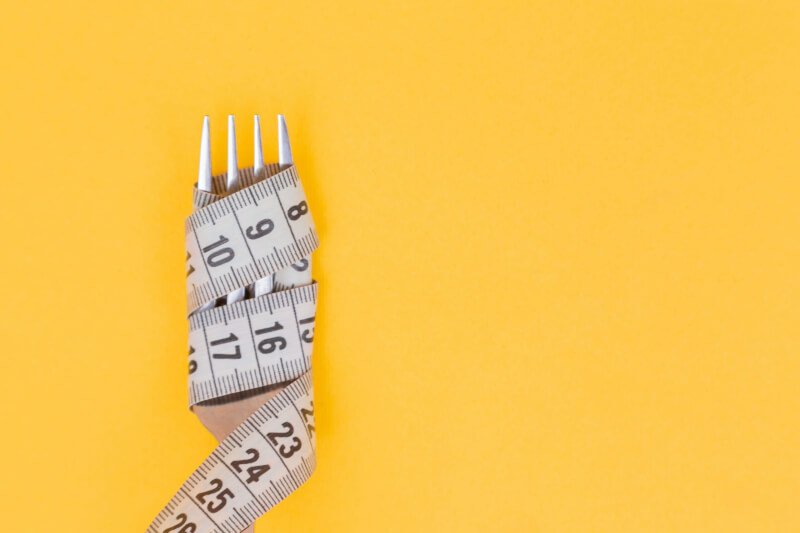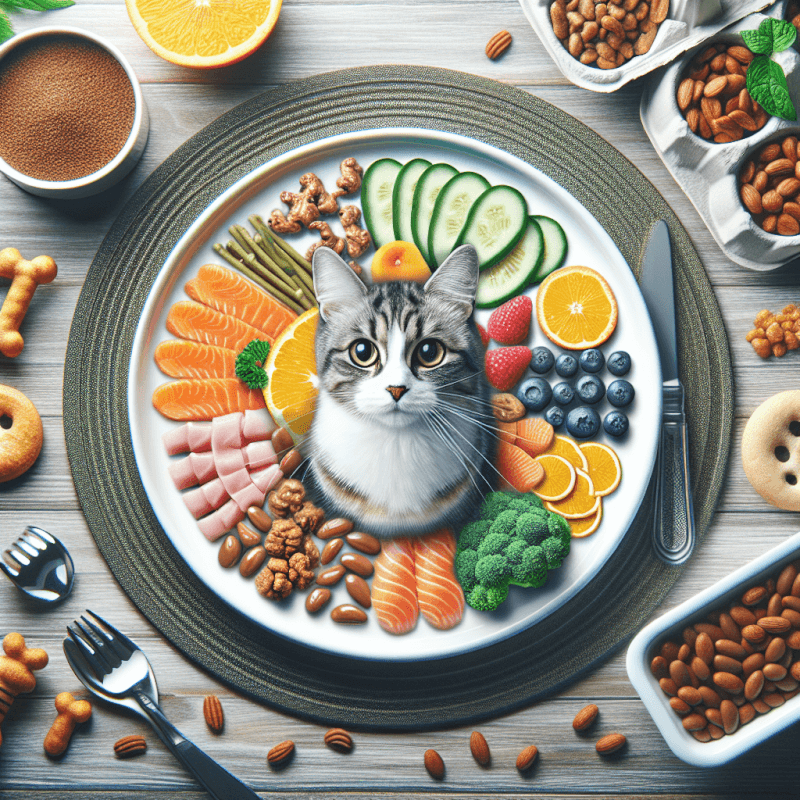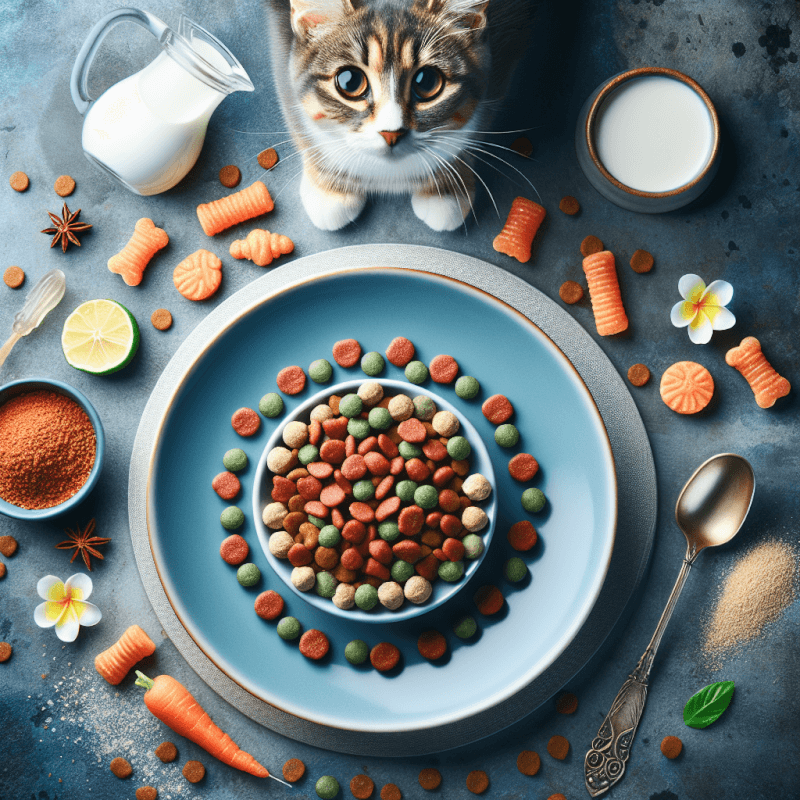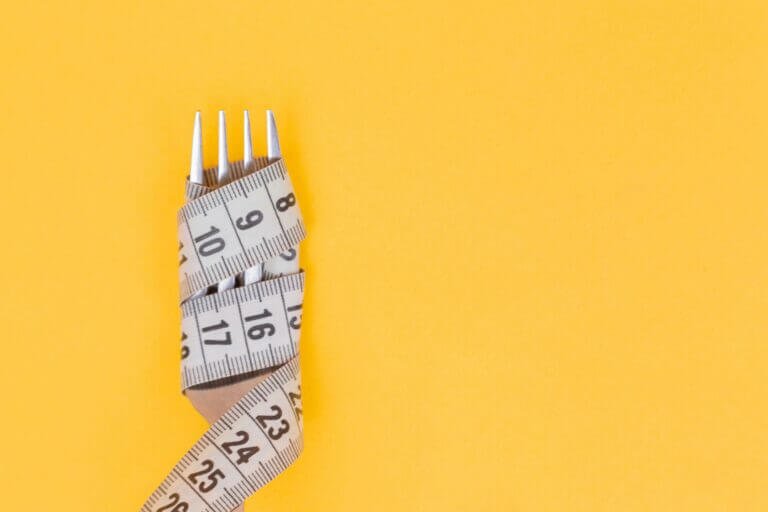If you’re a cat owner, you’ve probably asked yourself this very question: what is the best diet for my feline friend? We all want to provide our cats with the healthiest and most nourishing food possible, but with so many options out there, it can be overwhelming to choose the right one. Whether it’s dry food, wet food, raw food, or homemade meals, this article aims to explore the various factors to consider when selecting the most suitable diet for your beloved cat, ensuring their well-being and happiness for years to come.
Understanding your cat’s nutritional needs
The importance of a balanced diet
As a responsible cat owner, it is crucial to understand the nutritional needs of your feline friend. Providing a balanced diet is essential for your cat’s overall health and well-being. A balanced diet ensures that your cat receives all the necessary nutrients in the right proportions, supporting their growth, development, and immune system.
Ready for Cat Trivia?
Test your knowledge about cats!

A balanced diet for cats consists of proteins, fats, carbohydrates, vitamins, and minerals. Proteins are especially important for cats as they are obligate carnivores, meaning they require animal-based protein sources. Fats provide energy and aid in the absorption of certain vitamins. Carbohydrates provide a source of energy, although cats require fewer carbs compared to other animals.
Understanding feline dietary requirements
Cats have specific dietary requirements that differ from other animals. They have a higher protein requirement due to their carnivorous nature. Protein is vital for muscle development and repair, as well as supporting healthy skin and coat.
Cats also need a sufficient amount of fat in their diet. Fats help with energy storage, insulation, and the absorption of fat-soluble vitamins. Additionally, essential fatty acids, such as omega-3 and omega-6, aid in maintaining healthy skin and a shiny coat.
Unlike dogs, cats have limited ability to convert certain compounds found in plants, such as beta-carotene, into the active form of vitamin A. Therefore, they require preformed vitamin A, which is only found in animal tissue.
Furthermore, cats have specific dietary requirements for certain amino acids, such as taurine and arginine. Taurine, for example, is essential for cats and cannot be synthesized in sufficient amounts. A deficiency in taurine can lead to serious health issues, including heart disease and visual impairment.
Factors affecting your cat’s nutritional needs
Several factors can influence your cat’s nutritional needs. The age of your cat plays a significant role in determining the appropriate diet. Kittens, for instance, have higher energy and protein requirements to support their growth and development. Senior cats, on the other hand, may have decreased energy requirements and specific dietary needs to support joint health and maintain an ideal body weight.
The activity level of your cat should also be considered when determining their nutritional needs. Active cats may require more calories to fuel their energy expenditure, while less active cats may need a diet that helps maintain a healthy weight.
Additionally, specific health conditions, such as obesity, diabetes, food allergies, sensitivities, or kidney disease, may require a modified diet to manage these conditions effectively. It is vital to work closely with your veterinarian to ensure your cat’s nutritional needs are met in such cases.
Commercial cat food options
Dry cat food
Dry cat food, also known as kibble, is a popular option among cat owners due to its convenience and long shelf life. This type of cat food is usually less expensive than other options and provides a crunchy texture that helps promote dental health by reducing tartar buildup.
Dry cat food typically contains a higher percentage of carbohydrates than wet cat food. While some cats may thrive on a dry food diet, it is essential to ensure they receive enough moisture from other sources, such as fresh water or wet food, to prevent dehydration.
Wet cat food
Wet cat food, also referred to as canned food, is an excellent option for providing adequate hydration to your cat. It typically has a higher moisture content than dry food, which can be beneficial for cats that do not drink much water.
Wet cat food tends to be more palatable and can be especially useful for cats with dental issues or a finicky appetite. It comes in a variety of flavors and textures, making it easier to find something that your cat enjoys.
Semi-moist cat food
Semi-moist cat food is another commercially available option, but it is less common than dry or wet food. This type of food has a higher moisture content than dry food but lower than wet food. It often comes in individual portion packs, making it a convenient option when traveling or feeding cats with specific dietary needs.
However, it is important to note that semi-moist cat food tends to contain higher levels of preservatives and artificial additives compared to other options. Therefore, it is crucial to read the ingredient list carefully and choose a reputable brand.
Specialized cat diets
In addition to traditional cat food options, there are specialized diets available for cats with specific needs. These may include prescription diets designed to manage various health conditions, such as urinary tract health, weight management, or gastrointestinal issues. These specialized diets often require a veterinarian’s recommendation and supervision.
Specialized diets can be beneficial for cats with specific health concerns but should only be used under the guidance of a veterinary professional. It is important not to self-diagnose or implement such diets without proper consultation.

Raw and homemade cat food
Raw cat food
Raw cat food, also known as a raw diet or a biologically appropriate raw food (BARF) diet, consists of feeding cats raw meat, bones, organs, and sometimes vegetables or fruits. Proponents of raw cat food believe that it closely mimics a cat’s natural diet in the wild.
Advocates for raw cat food claim benefits such as healthier skin and coat, improved digestion, and increased energy levels. However, it is essential to note that raw feeding carries certain risks, such as bacterial contamination and an imbalance of nutrients if not properly formulated.
Cooked homemade cat food
Some cat owners choose to prepare homemade meals for their feline companions, cooked at home with carefully selected ingredients. Homemade cat food allows for better control over the ingredients and provides the opportunity to cater to specific dietary needs or food preferences.
Cooked homemade cat food recipes often include a combination of cooked meat, grains, vegetables, and supplements to ensure balanced nutrition. However, it is crucial to consult with a veterinary nutritionist or veterinarian to ensure the homemade diet meets all of your cat’s nutritional requirements.
Pros and cons of raw and homemade diets
Both raw and homemade diets have their advantages and disadvantages. Advocates of raw and homemade diets argue that they provide a more natural and wholesome approach to cat nutrition. However, it is important to consider the potential risks and challenges associated with these diets.
Raw diets pose a risk of bacterial contamination, such as salmonella or E. coli, not only for the cat but also for the humans handling the food. Proper handling, storing, and washing of utensils are essential to minimize these risks.
Homemade diets require careful formulation to ensure the cat’s nutritional needs are adequately met. There is a risk of nutrient deficiencies or imbalances if the diet is not well-planned or if essential nutrients are omitted.
Consulting with a veterinary nutritionist or veterinarian is crucial when considering a raw or homemade diet for your cat. They can help formulate an appropriate and balanced diet based on your cat’s specific needs and provide guidance on the best practices for feeding homemade meals.
Considerations for a cat with specific health conditions
Obesity and weight management
As with humans, obesity is a common health concern in cats and can lead to various health issues. Maintaining an ideal body weight is crucial to the overall health and longevity of your cat. If your cat is overweight or obese, it is important to manage their diet to help them achieve and maintain a healthy weight.
Weight management diets generally involve reducing calorie intake while ensuring the cat still receives all the necessary nutrients. Your veterinarian may recommend a specific weight management cat food or guide you on portion control and feeding frequency.
It is important to approach weight management with patience and consistency. Gradual weight loss is typically recommended to prevent excessive stress on the cat’s body and reduce the risk of complications.
Diabetic cats
Diabetes mellitus is a condition that affects cats as well. Diet plays a crucial role in managing diabetes in cats, alongside other treatment options. Cats with diabetes require a diet that helps regulate their blood sugar levels and maintain a consistent energy supply.
Veterinarians often recommend cat food with controlled levels of carbohydrates to prevent rapid spikes in blood sugar. High-quality protein sources and complex carbohydrates can be beneficial in managing diabetes in cats.
It is essential to work closely with your veterinarian to create a specific dietary plan for your diabetic cat. Regular blood glucose monitoring and adjustments to the diet may be necessary to ensure optimal management of their condition.
Food allergies and sensitivities
Just like humans, cats can develop food allergies or sensitivities to certain ingredients. Common food allergens for cats include beef, dairy products, fish, and grains. Allergies and sensitivities can manifest as gastrointestinal issues, skin problems, or respiratory symptoms.
If you suspect your cat has a food allergy or sensitivity, your veterinarian may recommend an elimination diet or a prescription hypoallergenic diet. These diets typically involve eliminating specific ingredients or using novel protein sources to identify and avoid the allergen.
Introducing new foods gradually and monitoring your cat’s response is crucial in managing food allergies or sensitivities. It may take time and patience to find the right diet for your cat, and the guidance of a veterinarian is essential during this process.
Senior cat diets
As cats age, their nutritional needs change. Senior cats may have reduced energy requirements and specific dietary considerations to support their aging bodies. Senior cat diets often focus on joint health, weight management, and kidney function support.
Senior cat foods are typically formulated with reduced levels of calories, fat, and phosphorous. Increased levels of antioxidants, omega-3 fatty acids, and glucosamine can also be beneficial for supporting joint health and cognitive function in older cats.
Regular veterinary check-ups are essential for senior cats to monitor any age-related health concerns and ensure their diet is appropriately adjusted to meet their changing needs.
Kidney disease
Kidney disease is a common health issue in older cats, and diet plays a crucial role in managing this condition. Cats with kidney disease may require a specialized renal diet that supports kidney function and helps manage symptoms.
Renal diets for cats are formulated to have controlled levels of phosphorus and protein to reduce the workload on the kidneys. They also often contain increased levels of omega-3 fatty acids and antioxidants to support kidney health.
It is important to work closely with your veterinarian to develop an appropriate dietary plan for your cat with kidney disease. Regular monitoring of kidney function and adjustments to the diet may be necessary to provide optimal support.

The importance of water intake
Understanding the significance of hydration
Water intake is of utmost importance for cats to maintain proper hydration and support vital bodily functions. Cats have a naturally low thirst drive, which can make it challenging for them to consume enough water solely from drinking.
Proper hydration is essential for maintaining healthy kidney function, promoting good digestion, regulating body temperature, and supporting overall organ health. Inadequate water intake can lead to various health issues, including urinary tract problems and dehydration.
Tips to encourage water consumption
To encourage your cat to drink more water, there are several strategies you can try:
Provide multiple clean water sources: Place water bowls in different locations around your home, ensuring they are easily accessible for your cat.
Use wide and shallow water bowls: Cats have sensitive whiskers, and deep bowls can be uncomfortable for them. Opt for wider, shallow bowls that allow easy access to the water.
Freshen up the water regularly: Cats prefer clean and fresh water. Changing the water daily and rinsing the bowl can encourage your cat to drink more.
Consider a cat water fountain: Some cats are attracted to moving water. A water fountain can provide a continuous flow of fresh water, making it more enticing for your cat to drink.
Add water to wet food: If your cat is on a wet food diet, consider adding a little extra water to increase their overall fluid intake.
Remember, water should always be readily available for your cat. Monitoring their water intake and ensuring they are adequately hydrated is crucial for their overall health.
Understanding cat food labels
Decoding the ingredients list
When selecting cat food, it is important to read and understand the ingredients list on the packaging. The ingredients list provides valuable information about the composition of the food and can help you make informed choices.
Ingredients are listed in descending order by weight. Look for high-quality protein sources, such as real meat or named meat meals, as the first ingredients. Avoid foods that list vague ingredients like “meat by-products” or “animal digest,” as they may contain less desirable parts of animals.
Be aware of controversial ingredients or potential allergens. Some common allergens for cats include grains, corn, soy, and artificial additives. If your cat has specific dietary requirements or sensitivities, it is important to choose cat food that avoids these ingredients.
Identifying essential nutrients
Cat food labels also provide information about the essential nutrients contained in the food. Look for specific nutrients mentioned on the label, such as protein, fat, fiber, vitamins, and minerals.
Protein is a crucial nutrient for cats, and the label should specify the minimum crude protein content. Fat content is also important, and the label may indicate the minimum crude fat content. Fiber content can impact digestion, and it is beneficial to choose foods with an appropriate fiber level for your cat’s digestive health.
The label may also mention specific vitamins and minerals, such as vitamin A, vitamin D, calcium, or phosphorus. These nutrients are essential for your cat’s overall health and should be present in appropriate amounts.
Recognizing the AAFCO label
The Association of American Feed Control Officials (AAFCO) is responsible for establishing standards for pet food in the United States. Look for the AAFCO statement on the cat food label to ensure that the food meets the minimum nutrient requirements for cats.
An AAFCO statement may read “Animal feeding tests using Association of American Feed Control Officials procedures” or “Formulated to meet the AAFCO Cat Food Nutrient Profiles for (specific life stage).” This statement indicates that the food has undergone specific testing or formulation processes to meet established nutritional standards.
The AAFCO statement provides confidence that the cat food provides balanced and complete nutrition for your cat’s specific life stage, whether it be for kittens, adults, or seniors.

Feeding guidelines and meal frequency
Determining the appropriate portion size
Feeding your cat the appropriate portion size is crucial to prevent overfeeding or underfeeding. The recommended portion size depends on various factors, including your cat’s age, weight, activity level, and overall health.
Most commercially available cat foods provide feeding guidelines on the packaging, indicating the recommended daily portion based on your cat’s weight. These guidelines are a good starting point, but it is important to monitor your cat’s body condition and adjust the portion size as needed.
It is also worth noting that indoor cats may have different energy requirements compared to outdoor cats, as they generally have less physical activity. Adjustments to the portion size may be necessary to meet the specific needs of your cat.
Feeding schedules for different age groups
The frequency of feeding can vary depending on your cat’s age. Kittens require more frequent meals, usually between three to four meals a day, to support their growth and development. As kittens grow older, the number of meals can gradually be reduced.
Adult cats typically do well with two meals per day, although some cats may prefer smaller, more frequent meals. Dividing the daily portion into two meals helps prevent overeating and allows for better digestion.
Senior cats may benefit from more frequent, smaller meals to aid in digestion and nutrient absorption. Consult with your veterinarian to determine the appropriate feeding schedule for your senior cat, taking into consideration their specific health needs.
Meal frequency considerations
While the general recommendation is to feed cats multiple meals throughout the day, it is essential to consider your cat’s individual preferences and lifestyle. Some cats may prefer free access to food, grazing throughout the day, while others may prefer structured mealtimes.
Regardless of the feeding schedule, it is important to ensure that the total daily portion is appropriate for your cat’s needs. Avoid leaving food out for extended periods, as it may spoil or attract pests. Monitor your cat’s food intake and adjust the portion size or feeding schedule if necessary.
Transitioning to a new diet
Gradual dietary changes
When transitioning your cat to a new diet, it is important to do so gradually. Abrupt changes in diet can lead to digestive upset or refusal to eat. A gradual transition allows your cat’s digestive system to adapt to the new food gradually.
Start by mixing a small amount of the new food with your cat’s current food. Over the course of several days to a week, gradually increase the proportion of the new food while reducing the old food. Monitor your cat’s response during the transition, and if any digestive issues occur, slow down the transition process.
Introducing new foods gradually
Introducing new foods to your cat’s diet can help provide variety and potentially meet specific dietary needs. When introducing new foods, whether it’s raw meat, homemade meals, or specialized diets, it is important to do so gradually.
Start by incorporating a small portion of the new food into their regular diet. Observe your cat’s response to the new food, looking for any signs of digestive upset or allergic reactions. If your cat tolerates the new food well, you can gradually increase the portion over time.
It is crucial to remember that not all cats will readily accept new foods. Some cats may be more resistant to change and may require additional patience and encouragement. Mixing the new food with a small amount of their favorite food or using food toppers can help entice them to try new flavors.
Dealing with finicky eaters
If your cat is a picky or finicky eater, it can be challenging to ensure they receive a balanced diet. There are several strategies you can try to encourage your cat to eat:
Offer a variety of flavors and textures: Cats can be attracted to novel or different flavors. Experiment with different brands, flavors, or food types to find what your cat prefers.
Warm up the food: Heating the food slightly can enhance the aroma, making it more appealing to your cat. Be careful not to make the food too hot, as cats are sensitive to temperature.
Use food puzzles or interactive feeders: These toys can make mealtime more engaging and mentally stimulating for your cat. Some cats may find the challenge of obtaining their food rewarding and enjoyable.
Avoid leaving food out for extended periods: While free feeding may seem convenient, it can discourage regular eating habits. Set regular meal times and remove any uneaten food after a certain period to encourage your cat to eat during meal times.
Consult with your veterinarian: If your cat’s finicky eating habits persist or result in weight loss or poor nutrition, consult with your veterinarian. They can help identify any underlying health issues and provide guidance on managing your cat’s diet.

Consulting with a veterinarian
The role of a veterinarian in designing a diet
Consulting with a veterinarian is crucial when it comes to designing a diet that meets your cat’s specific needs. Veterinarians have a deep understanding of feline nutrition and can provide expert guidance based on your cat’s age, health condition, and individual requirements.
A veterinarian can help determine the appropriate type of cat food, whether it is commercial or homemade, and recommend specific brands or formulations that meet your cat’s nutritional needs. They can also provide valuable advice on portion control, feeding schedules, and transitioning to a new diet.
Working closely with a veterinarian ensures that your cat’s diet is well-balanced and provides the necessary nutrients for optimal health and wellness.
Customizing a diet for your cat’s specific needs
Each cat is unique, and their nutritional needs may vary based on factors such as age, health conditions, and lifestyle. Veterinarians can customize a diet plan tailored to your cat’s specific needs, ensuring they receive the right balance of essential nutrients.
For cats with specific health conditions, such as obesity, diabetes, allergies, sensitivities, or kidney disease, a veterinarian’s expertise is invaluable. They can design a diet plan that addresses these conditions, manages symptoms, and promotes overall well-being.
Working collaboratively with your veterinarian allows for ongoing monitoring and adjustments to the diet as needed. Regular check-ups and communication are essential to ensure your cat’s nutritional needs are being met and their health is optimized.
Common diet-related mistakes to avoid
Overfeeding or underfeeding
One common mistake cat owners make is overfeeding or underfeeding their cats. Overfeeding can lead to obesity, which is associated with various health problems. On the other hand, underfeeding can result in malnutrition, weight loss, and a weakened immune system.
It is important to follow recommended feeding guidelines provided by the cat food manufacturer or your veterinarian. Monitor your cat’s body condition regularly, adjusting the portion size as needed to maintain a healthy weight.
If you are unsure about the appropriate portion size for your cat, consult with your veterinarian. They can assess your cat’s body condition, weight, and overall health to provide guidance on feeding amounts.
Feeding inappropriate foods
Feeding inappropriate foods to cats can have detrimental effects on their health. Cats have specific dietary requirements and are unable to metabolize certain substances found in human food or other animal species.
Common foods to avoid include chocolate, onions, garlic, grapes, raisins, alcohol, caffeine, and foods containing xylitol. These foods can be toxic to cats and may lead to severe health issues or even be fatal.
It is important to be well-informed about what foods are safe for cats and to keep human food out of reach. If you are unsure about the safety of a particular food, consult with your veterinarian before offering it to your cat.
Ignoring food recalls
Keeping track of food recalls is crucial when it comes to ensuring the safety of your cat’s diet. Occasionally, cat food brands may issue recalls due to contamination, improper labeling, or other safety concerns.
Stay informed about any recalls or safety alerts related to the cat food brands you use. Check the manufacturer’s website, subscribe to their newsletters, or sign up for recall notifications from reputable sources. If a recall is announced, follow the recommended actions provided by the manufacturer or regulatory authorities.
Regularly inspect and monitor the packaging and condition of your cat’s food. If you notice anything unusual, such as foul odors, mold, or damaged packaging, contact the manufacturer or discontinue use until further clarification.
Lack of variety in the diet
Cats, like humans, benefit from variety in their diet. Offering a variety of different flavors, textures, and protein sources can help prevent boredom and provide a wider range of nutrients.
While it is important to establish a consistent and well-balanced diet, incorporating occasional changes or rotations can be beneficial. This can be achieved by trying different brands, flavors, or protein sources within the recommended guidelines for your cat’s specific nutritional needs.
However, it is crucial to introduce new foods gradually and monitor your cat’s response. Sudden drastic changes may lead to digestive upset or refusal to eat. Consult with your veterinarian for recommendations on introducing variety into your cat’s diet in a safe and controlled manner.
In conclusion, understanding your cat’s nutritional needs is essential for their overall health and well-being. Providing a balanced diet, whether through commercially available cat food or a carefully formulated homemade diet, ensures that your cat receives the necessary nutrients to thrive. Considering factors such as age, health conditions, and individual preferences allows for a customized approach to your cat’s diet. Regular consultations with a veterinarian and attention to proper feeding guidelines and meal frequency further support their nutritional needs. By avoiding common diet-related mistakes and prioritizing hydration and safe feeding practices, you can provide the best diet for your feline friend for a long and healthy life.



